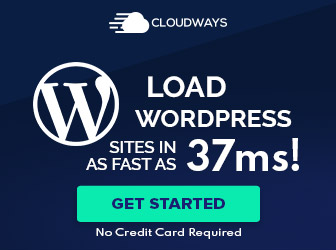The definition of a good website is one that: builds customer trust, showcases your brand, attracts organic traffic, collects, generates leads, and drives sales. Looking for the best practices to achieve the best website design for your small business?
Today, 93% of American adults are now online. If you don’t leverage this opportunity by having a website that distinguishes your brand from the competition, you are missing out on millions of opportunities. Long gone are the days when websites were simply a status symbol. Today, a good website is not an option—it’s a requirement.
So, the bad news is just having a website is no longer enough.
The good news is you can build that killer website for your small business by following these 7 tips.
7 Best Website Design Practices for Small Business
- Well designed and functional.
Your website is a reflection of your company, your services, and ultimately your brand. It is important that your website design be visually appealing, polished, and professional. Just as important as how it looks, it also must be fast, efficient, and respond as expected. - A good website is easy to use.
UX, or User Experience, is a subject that is frequently referred to when it comes to designing websites. User Experience design refers to the overall experience a user has on your website and how to improve it. It focuses on the structure and navigation of the website and how that can maximize customer satisfaction. If your site is easy to use, it encourages interaction and loyalty. Having good UX improves ROI and SEO, not to mention S-A-L-E-S. - Must be optimized for mobile.
The number of users searching on mobile phones is continuing to rise. By 2025, that number is expected to jump to 72.5%. It makes sense that it is important to set up the user experience and design of the website from the mobile perspective first. It means that in mobile-first design you need to make sure your digital products are readable on smaller screens. Responsive web design (or RWD design) uses Cascading Style sheets (or CSS) to allow websites and pages to display automatically adapting to all screens—including mobile. - Needs that fresh look.
Feeling like your website is stale or outdated? It may be. If so, your ideal audience could be passing you right by. Website design is changing. While some constants remain, like the need for timely and engaging content, added elements that can boost website impact is ever evolving. Modern web design focuses on and takes advantage of today’s current trends. Things like flat design, parallax scrolling, fixed header bars, large photo backgrounds, and bold typography are the top trends currently creating a buzz. - Ability to reach you.
So, your audience found your website—great! Now, how can they get in touch with you? Make your website easy to engage, give multiple points of contact, e.g., chat, phone, email, social media, easy-to-use contact form. Your audience won’t chase you down. Make it extremely easy for them to reach you. If they can’t reach you, there’s a good chance they will not buy from you. Expert tip: Don’t have time or resources for a live chat? Not to worry! With today’s chat widgets you can create an AI chat bot that interacts with visitors and collects their contact data, no 24/7 live chat staff needed! - Optimized for search and the social web.
Search Engine Optimization or SEO web design is focused on driving your traffic. It’s not enough to build a nice-looking website that’s easy to use. It needs to earn traffic. SEO has a few hundred effective rules and guidelines, but here are a few of the big ones:- Use page titles and meta tags on every page and alt tags on every image.
- Use keywords appropriately in content and links.
- Optimize content on your site to align with words real people search for.
- Use Cascading Style Sheets (CSS) for layout and keep your HTML code clutter-free.
- Clear calls to action (CTAs).
Ask and you get, don’t and you won’t. If your site asks nothing of visitors, they will surely do just that—nothing. What is the purpose of your site? Is that purpose clear to your readers? Even if it isn’t a hard sell on every page, every page should have an ask. Read an article, download a FREE toolkit, join your mailing list, ask—ask—ask.

Website builders are out there, geared towards small businesses, to help you build your killer site. I never recommend website builders like Wix or Squarespace, they are too limited in their capabilities. However, I do recommend content management systems like WordPress and Shopify.
Shopify is best for e-commerce businesses, whereas WordPress is generally an all-around go-to. WordPress is free! And with a free version of WordPress and Elementor, you can build a very lightweight, SEO-friendly website applying each of the 7 tips above.
Best Web Hosting for Small Business
Building your site on WordPress and need to find the best website hosting option? Don’t make a key mistake and select a website hosting provider and/or plan just based on pricing or other “best of” website hosting provider posts out there! You might end up with slow, sub-par performance website, which will affect your SEO and your sales.
The best web hosting options do change over time, so I’ll be creating a separate post just for the top web hosting companies and updating it regularly. But as of now, I recommend the following, starting with my #1 at the top of the list, A2 Hosting’s Turbo Boost Shared Web Hosting.
Best Web Hosting for WordPress:
- A2 Hosting (“Turbo Boost” shared WordPress hosting plan or above)
- Cloudways (flexibility in customizing server packages, great speed and pricing, 2GB+ on Vultr HF or Digital Ocean)
- NameHero (“Turbo Cloud” or above)
- Hostinger (“Business” WordPress plan or above)
- SiteGround (“GrowBig” WordPress hosting plan or above)
A very important note to consider: The best website hosting provider and plan can vary drastically based on your individual business model and website needs. Reach out to us for a website audit to learn which plan is the best fit for your business.
“If you build it, they will come” sounds romantic, but it’s not that simple when it comes to your website.
In other words, just having a site isn’t enough.
If it isn’t fast enough, user friendly, interesting, and easy to find, all of the time and money you have spent could all be for naught.
At Klever Strategies, we can help you make sure you get the ROI you are looking for.
Klever Strategies helps empower small business owners to gain clarity on their business goals. We help with the implementation of digital marketing strategies, including SEO-focused website design, and fine-tune these strategies to replicate what works year after year.


